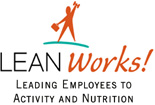Expert Interview
 Robin Soler, Ph.D. is a Coordinating Scientist for the Worksite Health Promotion, Youth Development, and Health Marketing/Health Communication systematic reviews being conducted by the Guide to Community Preventive Services. In this role she supervises fellows and collaborates with other members of the Community Guide to lead reviews and further develop and document Community Guide methods. She is also responsible for Web site redevelopment. Prior to joining the Community Guide, Dr. Soler was a technical director for ORC Macro where she coordinated an evidence-based treatment study of parent-child interaction therapy in children's mental health services, and provided technical assistance and training for a national evaluation project of children's mental health services. From 1996 to 2000 she served as a faculty associate at the Rollins School of Public Health and Project Director for Project Excellence—a substance use prevention program for African-American children living in Atlanta Public Housing complexes.
Robin Soler, Ph.D. is a Coordinating Scientist for the Worksite Health Promotion, Youth Development, and Health Marketing/Health Communication systematic reviews being conducted by the Guide to Community Preventive Services. In this role she supervises fellows and collaborates with other members of the Community Guide to lead reviews and further develop and document Community Guide methods. She is also responsible for Web site redevelopment. Prior to joining the Community Guide, Dr. Soler was a technical director for ORC Macro where she coordinated an evidence-based treatment study of parent-child interaction therapy in children's mental health services, and provided technical assistance and training for a national evaluation project of children's mental health services. From 1996 to 2000 she served as a faculty associate at the Rollins School of Public Health and Project Director for Project Excellence—a substance use prevention program for African-American children living in Atlanta Public Housing complexes.
Q: What is the Community Guide? How can employers use it?
Dr. Soler: The Community Guide is a credible resource with many uses, because it is based on a scientific systematic review process and answers questions critical to almost everyone interested in community health and well-being:
- What interventions have and have not worked?
- In which populations and settings has the intervention worked or not?
- What might the intervention cost? What should I expect for my investment?
- Does the intervention lead to any other benefits or harms?
- What interventions need more research before we know if they work or not?
The Task Force hopes those who use the Community Guide will:
- Use more interventions that have been shown to work
- Use fewer interventions that have been shown not to work
- Research interventions for which there is not enough evidence to say whether or not they work
Employers can use the Community Guide to
- Select worksite-based interventions with proven effectiveness in a range of literature
- Consider interventions proven effective in non-worksite settings for adaptation to worksite settings
- Promote effective interventions in communities in which their employees work
- Learn more about the value of scientific evidence and the systematic review process in promoting health in worksites and other community settings
Q: Do workplace wellness programs addressing obesity work? What is the evidence of effectiveness? What are the expected outcomes? What intervention components work best?
Dr. Soler: There are many ways to address obesity in the worksite. Some have done this directly and others indirectly. Only a few intervention approaches have been examined systematically, so we can not fully answer the question of whether all programs work or which components work best.
The standard for effectiveness is typically weigh loss, but the amount of weight loss required for an intervention to be considered effective can vary from one review team to the next and depends on whether one is looking at weight loss across all workers, potential intervention participants, all obese workers, or all obese participants.
The Guide to Community Preventive Services was interested in address this question in a slightly different way – what works to reduce obesity in worksitesettings? This is an outcome focused question. The review team searched for all studies conducted in worksite settings that examined change in body composition as an outcome. Some of these studies were nutrition-based interventions, some physical activity-based, some multi-component. The studies included in the final analysis were wworksite nutrition and physical activity programs that were designed to improve health-related behaviors and health outcomes. These programs included those with one or more approach that was informational and educational; behavioral and social; or policy and environmental. The results of this review are available at http://www.thecommunityguide.org/obesity/workprograms.html and in the recently published articles listed below.
There are a number of systematic reviews and metaanalyses that consider the effectiveness of programs designed to increase levels of physical activity among workers. These may not include weight loss among examined outcomes or may find increases in physical activity or change in other health outcomes, but no change in weight (see Guide to Community Preventive Services intervention summary on this page for an example: http://www.thecommunityguide.org/worksite/ahrf.html).
- Anderson et al. The Effectiveness of Worksite Nutrition and Physical Activity Interventions for Controlling Employee Overweight and Obesity: A Systematic Review American Journal of Preventive Medicine Volume 37 (4), 340-357.
- Task Force on Community Preventive Services. A Recommendation to Improve Employee Weight Status Through Worksite Health Promotion Programs Targeting Nutrition, Physical Activity, or Both. American Journal of Preventive Medicine Volume 37 (4), 358-359
- Note that the Guide to Community Preventive Services has not reviewed the full range of interventions in this area and has not considered commercial weight loss programs.
Q: What about more general workplace programs that include assessment of health risks, with feedback, and follow-up programming – do they work? What are the expected outcomes? What intervention components work best?
Dr. Soler: The Guide to Community Preventive Services considered this question in two of their reviews which are summarized at http://www.thecommunityguide.org/worksite/ahrf.html and will be available in the February 2010 supplement issue of the American Journal of Preventive Medicine. The Task Force on Community Preventive Services recommends the use of assessments of health risks with feedback when combined with health education programs, with or without additional interventions, on the basis of strong evidence of effectiveness in improving one or more health behaviors or conditions in populations of workers. Additionally, the Task Force recommends the use of assessments of health risks with feedback when combined with health education programs to improve the following outcomes among participants:
- Tobacco use (strong evidence of effectiveness)
- Excessive alcohol use (sufficient evidence of effectiveness)
- Seat belt use (sufficient evidence of effectiveness)
- Dietary fat intake (strong evidence of effectiveness)
- Blood pressure (strong evidence of effectiveness)
- Cholesterol (strong evidence of effectiveness)
- Number of days lost from work due to illness or disability (strong evidence of effectiveness)
- Healthcare services use
- Summary health risk estimates (sufficient evidence of effectiveness)
The Task Force found insufficient evidence for:
- Body composition
- Consumption of fruit and vegetables
- Fitness
Because the was no consistency in the programs or combination of intervention strategies offered across the group of studies reviewed, the Task Force could not draw conclusions about which components work best.
Q: How might employers who are new to worksite wellness initiate a program? How can they use the Community Guide to get started?
Dr. Soler: The path to program initiation is a complicated one which is likely best assisted by following a process such as that described at the CDC Lean Works Web site or CDC's Healthy Worker Initiative. CDC also offers a series of CDs to guide communities through program development and evaluation. An example of this can be found at http://www.cdc.gov/std/healthcomm/cdcynergy.htm.
The Community Guide can be used in the program planning process. Once planners identify their community health issues and draft measurable program objectives, the Community Guide can be used to select evidence-based interventions to help achieve those objectives.
For ideas on how to use the Community Guide in program planning, see our Programs and Services Web page which includes many helpful tips and links, including one to our Program Planning Resource.
Q: How might employers decide between interventions that target all employees versus those that target only selected sub-populations, such as those who are overweight and obese?
Dr. Soler: The answer to this question is multifold and relates to things such as practical and economic feasibility, ethics, and, of course, need. These types questions are addressed in the planning resources referenced above. The answers will be worksite specific, so cannot be addressed here.
Q: If an employer wanted to evaluate a workplace health promotion program, what are some outcomes they might want to measure?
Dr. Soler: This is an important question because it not only helps a worksite determine the overall effectiveness of a program, but can help employers modify a program along the way to make it more cost effective and efficient.
Participation rates and attrition rates are not only program implementation variables, they can provide you with your first indicator of whether the program is of interest to workers (this could be enhanced with a process evaluation).
Because the primary goal of an obesity program is weight loss, indicators of this, such as weight, BMI, and % body fat should be considered. However, these variables typically require multiple measures over time, so should be enhanced with other correlates of weight loss, such as participation in certain types of physical activity and dietary change. Other important indicators of health status, such as lipid levels and blood pressure should also be considered. The employer should strongly consider standardized outcome measures to increase comparability with available research and epidemiological studies. Issues of confidentiality may influence decision making around outcomes, so employers may choose to assess their entire workforce periodically and report group level instead of individual level change. If this is done, the magnitude of change expected should be adjusted accordingly.
Q: When can employers determine their program is effective? Or, is measurement and evaluation ongoing?
Dr. Soler: Programs should establish short, mid-term and long-term goals and should consider the range of potential outcomes from participation, program and job satisfaction to short and long-term health gains. Healthy weight loss takes time, weight maintenance is adequate for many but hard to assess, but a program with no participants can be understood and addressed quickly.
The type and frequency of evaluation will ultimately be a financial one, but our work suggests that findings will vary across time and may deteriorate once a program ends.
Also in This Section
The opinions expressed in these interviews are those of the interviewee and do not necessarily represent the official views of the Center for Disease Control and Prevention (CDC), the Department of Health and Human Services (DHHS), or the U.S. Government. The placement of these interviews on the Center for Disease Control and Prevention's website does not imply the endorsement of one particular organization, author, product, or service over another.

Contact Us:
- Centers for Disease Control and Prevention
1600 Clifton Rd
Atlanta, GA 30333 - 800-CDC-INFO
(800-232-4636)
TTY: (888) 232-6348
24 Hours/Every Day - cdcinfo@cdc.gov

